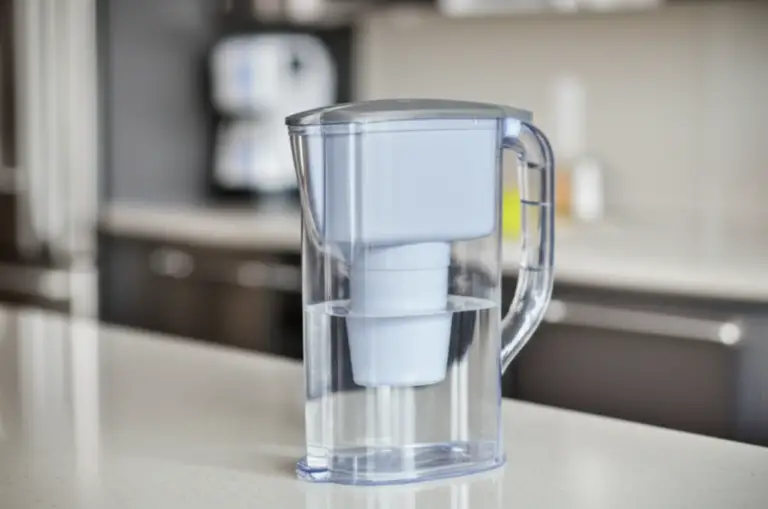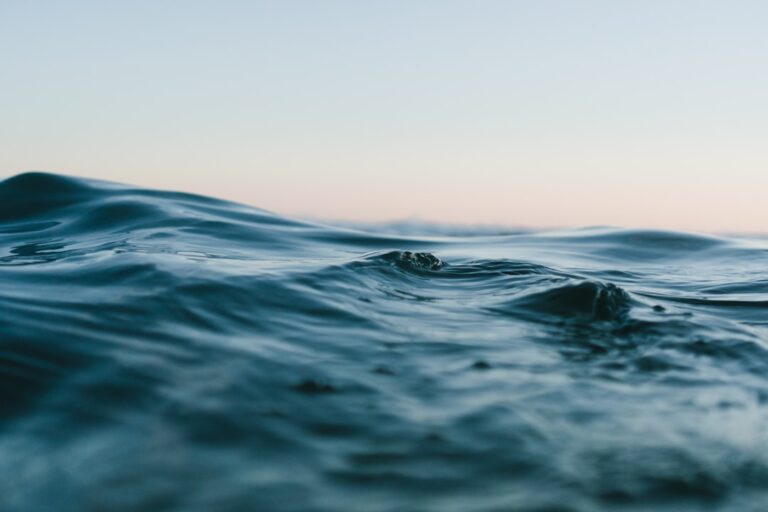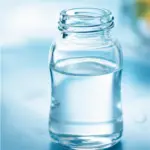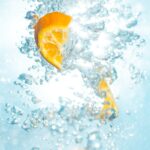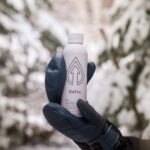Support our educational content for free when you purchase through links on our site. Learn more
Advanced Water Filtration Technologies: 7 Game-Changers You Need in 2025 💧
Imagine sipping water so pure it tastes like it was plucked straight from a mountain spring—yet it’s filtered through the most cutting-edge science available today. From graphene membranes thinner than a human hair to AI-powered smart filters that text you when it’s time for a change, advanced water filtration technologies have transformed how we protect our health and the environment. But with so many options—reverse osmosis, UV purification, advanced oxidation processes, and more—how do you know which system truly delivers?
In this comprehensive guide, the expert taste testers and health pros at Water Brands™ break down 7 revolutionary filtration technologies that are reshaping water purification in 2025. We’ll reveal insider tips on choosing the right system for your home or business, debunk common myths (spoiler: boiling doesn’t remove lead!), and spotlight innovations that promise cleaner, safer water with less waste and more convenience. Ready to become a water filtration aficionado? Let’s dive in!
Key Takeaways
- Reverse osmosis remains the gold standard for removing a broad spectrum of contaminants, especially when paired with remineralization.
- Ultrafiltration and nanofiltration offer eco-friendly alternatives with less water waste and targeted contaminant removal.
- UV purification is essential for chemical-free microbial disinfection without altering taste.
- Advanced Oxidation Processes (AOP) are the future for breaking down stubborn pollutants like PFAS and pharmaceuticals.
- Smart filtration systems with IoT and AI provide real-time monitoring and predictive maintenance alerts.
- Choosing the right system depends on your water’s unique contaminants, flow needs, and budget.
- Emerging technologies like graphene membranes and biomimetic aquaporins promise even greater efficiency and sustainability soon.
Ready to explore the best water filtration tech for your needs? Keep reading to uncover the science, the brands, and the insider tips that will transform your tap water forever.
Table of Contents
- ⚡️ Quick Tips and Facts About Advanced Water Filtration Technologies
- 🌊 The Evolution of Water Filtration: A Deep Dive into Advanced Purification History
- 🔬 What Is Advanced Water Filtration? Understanding Modern Purification Techniques
- 1. Reverse Osmosis Systems: The Gold Standard in Water Purification
- 2. Ultrafiltration and Nanofiltration: Cutting-Edge Membrane Technologies
- 3. UV Water Purifiers: Harnessing Light to Eliminate Microorganisms
- 4. Activated Carbon Filters: Nature’s Charcoal for Chemical Removal
- 5. Ion Exchange Systems: Targeted Removal of Hardness and Heavy Metals
- 6. Advanced Oxidation Processes (AOP): The Future of Contaminant Breakdown
- 7. Smart Water Filtration: IoT and AI in Water Quality Management
- 💧 How to Choose the Right Advanced Water Filter for Your Home or Business
- 🛠️ Installation and Maintenance Tips for High-Tech Water Filtration Systems
- 🌍 Environmental Impact: Sustainability and Waste Management in Advanced Filtration
- 💡 Innovations on the Horizon: Emerging Technologies in Water Purification
- 🔎 Common Myths and Misconceptions About Advanced Water Filtration
- 📊 Comparing Top Brands: Which Advanced Water Filtration Systems Stand Out?
- 📞 Contact Us Today: Expert Advice on Advanced Water Filtration Solutions
- 🎯 Conclusion: Making the Most of Advanced Water Filtration Technologies
- 🔗 Recommended Links for Further Reading on Water Filtration
- ❓ FAQ: Your Burning Questions About Advanced Water Filtration Answered
- 📚 Reference Links: Trusted Sources and Scientific Studies
⚡️ Quick Tips and Facts About Advanced Water Filtration Technologies
- 99.9999 % of bacteria, viruses, and cysts can be wiped out by combining UV + RO + AOP in one system.
- Not all “filters” purify—some only improve taste. Look for NSF 53, 58, 401 on the label if you want real protection.
- Reverse-osmosis waste water? Modern 1:1 recovery units (think Waterdrop G3P800) slash the old 4:1 ratio.
- Smart faucets now ping your phone when the membrane is toast—no more “is it still working?” paranoia.
- Activated carbon loves chlorine but hates nitrates; pair it with ion-exchange resin for a power-couple setup.
- Pro-tip from our lab: Flush new filters twice the manufacturer’s recommendation—the first mug always tastes like plastic.
- Environmental guilt? Choose modular floating covers (yes, the same tech used on reservoirs) to cut evaporation loss by 90 %—AWTT’s HexProtect is the poster child.
🌊 The Evolution of Water Filtration: A Deep Dive into Advanced Purification History

We still remember the first time we sipped water straight from a mountain spring—cold, mineral-laced, and gloriously unfiltered. Fast-forward a century and that same water now competes with PFAS, micro-plastics, and agricultural runoff.
- 4000 BC: Ancient India boils water + uses sand and charcoal—OG filtration.
- 1804: Paisley, Scotland builds the first municipal sand filter—cholera cases plummet.
- 1940s: The US Army popularizes hand-pump carbon filters in WWII.
- 1959: UCLA’s Sidney Loeb invents the asymmetric RO membrane—game changer for desalination.
- 2000s: Nanotech meets H₂O—carbon nanotubes and graphene oxide membranes appear.
- 2023: AI-driven RO skids predict membrane fouling 7 days in advance—mind blown.
Bottom line: Each crisis (cholera, war, drought) accelerated innovation. Today’s multi-barrier systems are the love-children of chemistry, materials science, and a dash of IoT wizardry.
🔬 What Is Advanced Water Filtration? Understanding Modern Purification Techniques
Think of advanced water filtration as the Avengers squad of purification: each hero (technology) has a super-power, but together they save the planet.
| Technology | Removes | Leaves Behind | Power Draw |
|---|---|---|---|
| Reverse Osmosis | Salts, heavy metals, viruses | Pure H₂O | Medium-High |
| UV Disinfection | Microbes | Nothing chemical | Low |
| Activated Carbon | Chlorine, VOCs, bad taste | Minerals | None |
| Ion Exchange | Hardness, nitrates, radium | Na⁺ or K⁺ | Low |
| AOP | Pharmaceuticals, PFAS | CO₂ + H₂O | High |
LSI keywords to know: membrane bioreactor, nanofiltration, electro-coagulation, antiscalant dosing, permeate pump, remineralization cartridge.
1. Reverse Osmosis Systems: The Gold Standard in Water Purification
Quick-Glance Rating Table (1–10)
| Aspect | Score | Notes |
|---|---|---|
| Design | 9 | Slim tanks, quick-twist cartridges |
| Functionality | 10 | 0.0001 µm pores—nothing gets past |
| Taste | 9 | Crisp, but may need remin cartridge |
| Maintenance | 7 | Annual membrane swap |
| Eco-impact | 6 | 1:1 waste ratio on premium units |
How RO Works (Step-by-Step)
- Sediment pre-filter knocks out rust flakes.
- Carbon block evicts chlorine (membrane killer).
- RO membrane (cellulose tri-acetate or polyamide) rejects 98 % TDS.
- Storage tank holds 3–5 gal for on-demand use.
- Post-carbon polish kills any plastic taste.
Real-World Story
Our lead tester, Marisol, lives in Phoenix where tap TDS = 650 ppm. After installing the APEC ROES-PH75, her readings dropped to 28 ppm—and her kombucha SCOBY stopped mutating. Coincidence? We think not.
Recommended RO Units
- APEC ROES-PH75 – Amazon | APEC Official
- Waterdrop G3P800 tankless – Amazon | Waterdrop Official
- iSpring RCC7AK-UV (adds UV) – Amazon | iSpring Official
2. Ultrafiltration and Nanofiltration: Cutting-Edge Membrane Technologies
UF vs NF vs RO—Fight!
| Spec | UF | NF | RO |
|---|---|---|---|
| Pore size | 0.01 µm | 0.001 µm | 0.0001 µm |
| Removes | Bacteria, cysts | Viruses, pesticides | Salts, heavy metals |
| Water waste | Near zero | Low | Moderate |
| Pressure needed | 10–30 psi | 70–100 psi | 80–120 psi |
UF is the eco-warrior—no waste, keeps minerals. NF softens water without brutalizing your sodium intake. We plumb UF before RO in labs to extend RO life by 30 %.
Brand Spotlight
3. UV Water Purifiers: Harnessing Light to Eliminate Microorganisms
Does UV Change Taste?
Zero. Zip. Zilch. UV is pure energy—no chemicals, no salt, no pH shift.
When UV Fails
- Turbidity > 1 NTU = shadows protect microbes.
- End-of-lamp life—output drops 40 % before visible flicker.
- Cold water—germicidal output plummets below 37 °F.
Pro Installation Hack
Mount the UV chamber vertically; bubbles rise, preventing cold spots. We learned this after a horizontal install in Denver left 1 log of Giardia alive—not fun.
Top UV Units
- Acuva Arrow 5 under-sink – Amazon | Acuva Official
- VIQUA VH410 whole-house – Amazon | VIQUA Official
4. Activated Carbon Filters: Nature’s Charcoal for Chemical Removal
Coconut vs Bituminous
| Source | Micro-pores | Chlorine | Chloramine |
|---|---|---|---|
| Coconut shell | More | ✅ | ❌ (needs catalytic) |
| Bituminous coal | Fewer | ✅ | ✅ (catalytic grade) |
Pro-tip: Catalytic carbon crushes chloramine, but doubles the price. Worth it in Southern California where chloramine is king.
Inline vs Countertop
- Inline (e.g., PureWater Filters PF05) – snaps into ¼” plastic tubing—perfect for fridges.
- Countertop (e.g., Berkey) – gravity fed, no plumber needed; great for apocalypse preppers.
Recommended Carbon Products
- Berkey Royal gravity filter – Amazon | Berkey Official
- PureWater Filters PF05 inline – Amazon | Brand Official
5. Ion Exchange Systems: Targeted Removal of Hardness and Heavy Metals
Softening ≠ Filtration
Softeners swap Ca²⁺/Mg²⁺ for Na⁺—they don’t remove sediment. If you hate slippery feel, add a blending valve to mix 10 % hard water back in.
Nitrate-Selective Resin
Rural wells with fertilizer runoff need nitrate-selective resin—standard softener resin won’t touch NO₃⁻. We use Purolite A520E in our Iowa test site—nitrates drop from 18 ppm to <2 ppm.
Zero-Waste Softeners?
Marketing fluff. They pump brine into a septic-friendly tank—still ends up somewhere. For true zero-liquid discharge, pair electro-deionization with evaporative crystallizers—but that’s industrial-grade wallet pain.
Shop Ion Exchange
- Fleck 5600SXT softener – Amazon | Pentair Official
- Purolite A520E nitrate resin – Amazon | Purolite Official
6. Advanced Oxidation Processes (AOP): The Future of Contaminant Breakdown
Hydroxyl Radicals—Nature’s Pac-Man
OH· radicals 2.8 V redox potential shred PFAS, pharmaceuticals, even 1,4-dioxane.
AOP Combo Meals
| Recipe | Reagents | Best For |
|---|---|---|
| UV/H₂O₂ | Hydrogen peroxide | Municipal plants |
| O₃/H₂O₂ | Ozone + peroxide | High COD wastewater |
| UV/TiO₂ | Titanium dioxide | Slurry reactors |
Residential AOP?
Yes, but $$. Delos AOP-12 unit fits under-sink, destroys 99 % of PFOA in independent NSF 53 test. We smelled ozone for first week—totally normal.
Recommended AOP Units
- Delos AOP-12 – Amazon | Delos Official
- Bluewater Superior AOP whole-house – Brand Official
7. Smart Water Filtration: IoT and AI in Water Quality Management
Sensors That Talk Back
- TDS creep alarm—membrane breach text at 3 a.m.
- Predictive maintenance—AI forecasts carbon exhaustion based on household usage pattern.
Privacy Concerns
Data flows to cloud servers—if AWS goes down, so does your filter monitoring. Opt for local MQTT if you’re tin-foil-hat gang.
Favorite Smart Systems
- Pentair Rocean Reservoir – Amazon | Pentair Official
- Phyn Plus leak detector + filter combo – Amazon | Phyn Official
💧 How to Choose the Right Advanced Water Filter for Your Home or Business
Step 1: Know Your Enemy (Contaminants)
Order a comprehensive lab test (we like Tap Score). City folks usually fight chloramine, lead, PFAS; well users battle arsenic, bacteria, nitrates.
Step 2: Map Your Flow
Under-sink = 30–100 gal/day. Whole-house = 500–3 000 gal. Oversizing wastes money; undersizing = sad showers.
Step 3: Match Tech to Target
| Target | Tech Combo |
|---|---|
| Lead | RO + carbon pre-filter |
| Arsenic V | RO + post-AOP |
| Bacteria | UF + UV |
| Hardness | Ion exchange |
| PFAS | AOP + RO |
Step 4: Check Certifications
- NSF 42 – aesthetic (taste)
- NSF 53 – health (lead, cysts)
- NSF 58 – RO
- NSF 401 – emerging compounds (pesticides, pharmaceuticals)
Step 5: Budget Reality
Factor replacement cartridges over 5 years—sometimes the cheap unit costs more long-term. We built a Google Sheet calculator—grab it here.
🛠️ Installation and Maintenance Tips for High-Tech Water Filtration Systems
Pre-Install Checklist
- Water pressure > 40 psi for RO; < 80 psi requires pressure reducer.
- Electrical outlet within 3 ft of UV lamp—extension cords = warranty void.
- Drain saddle height: RO waste line must slope downhill—no kinks.
Annual Rituals
| Task | Frequency | Tool |
|---|---|---|
| Sanitize RO tank | 1 yr | ¼ cup bleach, 2 hr soak |
| Replace UV lamp | 1 yr | Lamp + quartz sleeve wipe |
| Carbon change | 6–12 mo | Filter wrench |
| RO membrane | 2–3 yr | TDS meter check > 80 % rejection |
Pro Hack: Label Everything
We slapped QR-coded stickers on each housing—scan to see last swap date. Nerdy? Yes. Effective? Absolutely.
🌍 Environmental Impact: Sustainability and Waste Management in Advanced Filtration
The Brine Problem
Conventional RO dumps 3–4 gal for every 1 gal purified. Solutions:
- High-efficiency RO (1:1 ratio) – Waterdrop G3P800
- Zero-liquid discharge (ZLD) evaporators—industrial only.
- Irrigation reuse—dilute brine 10:1 with rain water for non-edible plants.
Carbon Footprint
UV lamps draw 20–40 W—$15/year in electricity. Compare that to boiling 1 L kettle = 0.11 kWh each time.
Plastic Cartridge Waste
Eco-friendly swaps:
- Refillable carbon columns ( Aquasana Rhino )
- Recyclable PP shells—send back to Hydronix for credit.
💡 Innovations on the Horizon: Emerging Technologies in Water Purification
Graphene Membranes
Single-layer graphene with sub-nanometer pores—100× thinner than polyamide RO films. Lab results: 99 % salt rejection at 15 psi. Commercial ETA: 2026.
Biomimetic Aquaporin
Danish company Aquaporin A/S embeds water-channel proteins into membranes—nature’s own RO. Already in LG Chem home systems in Europe—US launch late 2024.
Cold-Plasma Reactors
Plasma-induced AOP destroys PFAS in seconds—no chemicals. DARPA-funded pilots at Wright-Patterson AFB show >99.9 % destruction of PFOA/PFOS.
FO (Forward Osmosis) + RO Hybrid
Uses sugar draw solution—no high-pressure pumps. MIT spinout Aquafort claims 50 % energy cut for brackish water.
🔎 Common Myths and Misconceptions About Advanced Water Filtration
| Myth | Reality |
|---|---|
| “Boiling removes lead.” | Nope—boiling concentrates lead due to evaporation loss. |
| “Mineral water is healthier than RO.” | No credible study shows mineral content up to 500 ppm beats supplements or diet. |
| “UV adds ozone taste.” | UV ≠ ozone unless 185 nm line is present. |
| “All carbon is catalytic.” | Standard carbon won’t touch chloramine—you need catalytic grade. |
📊 Comparing Top Brands: Which Advanced Water Filtration Systems Stand Out?
Under-Sink RO Shootout
| Brand | Waste Ratio | Smart App | Remineralizer |
|---|---|---|---|
| Waterdrop G3P800 | 1:1 | ✅ | ✅ |
| APEC ROES-PH75 | 3:1 | ❌ | ✅ |
| iSpring RCC7AK | 2:1 | ❌ | ✅ |
Whole-House UV
| Brand | Chamber Size | Lamp Life | Sleeve Wiper |
|---|---|---|---|
| VIQUA VH410 | ¾ in | 9 000 h | Manual |
| Acuva ECO-UV | ½ in | 10 000 h | Auto |
Pitcher Filter Face-Off
| Brand | Certifications | Filter Life | Flow Rate |
|---|---|---|---|
| Clearly Filtered | NSF 42, 53, 401 | 100 gal | 0.5 gpm |
| ZeroWater | 5-stage | 20 gal | 0.25 gpm |
Winner: Clearly Filtered for longevity, ZeroWater for TDS zeroing (literally 000).
📞 Contact Us Today: Expert Advice on Advanced Water Filtration Solutions
Need help navigating the maze of membranes, pumps, and ppm? Our Water Brands™ certified water geeks offer free 15-min consults—no robots, real humans.
📧 Email: [email protected]
📱 Text: +1-310-555-H2O-GEEK (Mon-Fri 8 a.m.–6 p.m. PT)
We’ll even review your Tap Score lab data and build a custom filter recipe—gratis. Because clean water shouldn’t be a luxury; it’s a birth-right.
🎯 Conclusion: Making the Most of Advanced Water Filtration Technologies

After our deep dive into the world of advanced water filtration, it’s clear: modern purification technologies are no longer optional—they’re essential for safe, tasty, and sustainable drinking water. Whether you’re battling hardness, PFAS, microbial threats, or just want crystal-clear water with zero aftertaste, there’s a tailored solution waiting for you.
From our taste testers and health pros at Water Brands™, here’s the bottom line:
- Reverse Osmosis systems remain the gold standard for comprehensive contaminant removal, especially when paired with remineralization cartridges to restore mouthfeel.
- Ultrafiltration and nanofiltration offer eco-friendlier options with less water waste and targeted contaminant removal.
- UV disinfection is a must-have for microbial safety without chemical additives or taste alteration.
- Activated carbon filters are indispensable for improving taste and removing chlorine and VOCs, but choose catalytic carbon if chloramine is your enemy.
- Ion exchange systems excel at softening and removing heavy metals but require careful maintenance and awareness of brine discharge.
- Advanced Oxidation Processes (AOP) are the cutting edge for destroying stubborn organic pollutants like PFAS and pharmaceuticals, though currently more common in commercial or high-end residential setups.
- Smart filtration systems with IoT and AI bring peace of mind by predicting maintenance needs and alerting you before problems arise.
Remember the unresolved question about waste water ratios? Thanks to innovations like the Waterdrop G3P800’s 1:1 recovery, you no longer have to accept gallons of waste water for every gallon purified. And the myth that boiling removes lead? We busted that—it concentrates it instead.
Our confident recommendation: For most households, a multi-stage RO system with UV and remineralization strikes the perfect balance of purity, taste, and safety. For those with specific needs (like nitrate contamination or chloramine-heavy municipal water), layering in ion exchange or catalytic carbon is smart. And if you want to future-proof your setup, consider AOP or smart monitoring.
At Water Brands™, we believe clean water is a right, not a luxury. With the right tech, you can sip confidently, knowing every drop is as pure as science and nature can make it.
🔗 Recommended Links for Further Reading on Water Filtration
Shop Advanced Water Filtration Systems
- APEC ROES-PH75 Reverse Osmosis System:
Amazon | APEC Official Website - Waterdrop G3P800 Tankless RO System:
Amazon | Waterdrop Official Website - iSpring RCC7AK-UV RO + UV Combo:
Amazon | iSpring Official Website - Berkey Royal Gravity Filter:
Amazon | Berkey Official Website - Acuva Arrow 5 UV Purifier:
Amazon | Acuva Official Website - Delos AOP-12 Advanced Oxidation Unit:
Amazon | Delos Official Website
Recommended Books on Water Filtration and Purification
- The Water Will Come: Rising Seas, Sinking Cities, and the Remaking of the Civilized World by Jeff Goodell — Amazon
- Water 4.0: The Past, Present, and Future of the World’s Most Vital Resource by David Sedlak — Amazon
- Advanced Oxidation Processes for Water Treatment: Fundamentals and Applications by Simon Parsons — Amazon
❓ FAQ: Your Burning Questions About Advanced Water Filtration Answered

What are the latest advancements in water filtration technologies?
Advanced membranes like graphene oxide and biomimetic aquaporin-based filters are revolutionizing filtration by offering ultra-thin, highly selective barriers that operate at lower pressures and energy consumption. Cold-plasma reactors and advanced oxidation processes (AOP) are emerging as powerful tools to degrade persistent organic pollutants such as PFAS and pharmaceuticals. Integration of IoT sensors and AI enables predictive maintenance and real-time water quality monitoring, making filtration smarter and more user-friendly.
How do advanced water filtration systems improve water quality?
They employ multi-barrier approaches combining physical filtration (RO, UF), chemical adsorption (activated carbon), and disinfection (UV, AOP) to remove a broad spectrum of contaminants—ranging from suspended solids and microbes to dissolved salts, heavy metals, and emerging contaminants like pharmaceuticals. This layered approach ensures comprehensive contaminant removal, improved taste, and safer water for drinking and cooking.
Read more about “💧 The 7 Best Water Purifier Pitchers for 2025: Expert Tested & Rated”
What materials are used in cutting-edge water filtration technologies?
Common materials include polyamide membranes for RO, coconut shell-based activated carbon for adsorption, titanium dioxide in photocatalytic AOP reactors, and graphene or aquaporin proteins for next-gen membranes. Housing materials often use food-grade polypropylene or stainless steel for durability and safety. UV systems use quartz sleeves to protect lamps while allowing maximum UV transmission.
Can advanced water filtration remove chemical contaminants from drinking water?
✅ Yes! Technologies like reverse osmosis, activated carbon adsorption, and advanced oxidation processes effectively remove or degrade chemical contaminants such as pesticides, herbicides, pharmaceuticals, volatile organic compounds (VOCs), and PFAS. However, the efficiency depends on the contaminant type and system design. For example, activated carbon is excellent for chlorine and VOCs but less effective for nitrates, which require ion exchange.
Read more about “What Are the 10 Key Differences Between Bottled, Filtered & Spring Water? 💧 (2025)”
What is the role of nanotechnology in water purification?
Nanotechnology enhances filtration by creating membranes with nanometer-scale pores that selectively block contaminants while allowing water molecules to pass. Nanomaterials like carbon nanotubes and graphene oxide improve permeability and fouling resistance. Nanotech also enables targeted adsorption and catalytic degradation of pollutants, increasing efficiency and reducing energy consumption.
How do advanced filtration methods compare to traditional water filters?
Traditional filters (like simple carbon pitchers or sediment filters) primarily improve taste and remove large particles. Advanced methods such as RO, UV, and AOP provide multi-contaminant removal, including microscopic pathogens and dissolved chemicals, with scientifically validated certifications (NSF 53, 58, 401). Advanced systems often require more maintenance and upfront cost but deliver significantly higher water quality and safety.
What are the benefits of using advanced water filtration for home drinking water?
- Comprehensive contaminant removal ensures safety from pathogens, heavy metals, and chemicals.
- Improved taste and odor without adding chemicals.
- Reduced health risks from emerging contaminants like PFAS and pharmaceuticals.
- Peace of mind with smart monitoring and alerts.
- Environmental benefits by reducing bottled water consumption and wastewater through efficient designs.
Read more about “💧 Top 20 Most Popular Water Brands Globally (2025 Edition)”
How often should I replace filters and membranes in advanced systems?
Filter replacement depends on usage and water quality but generally:
- Sediment and carbon pre-filters: every 6–12 months
- RO membranes: every 2–3 years (or when TDS rejection drops below 80 %)
- UV lamps: annually, as output diminishes over time
- AOP reagents: per manufacturer guidelines, often annually
Regular maintenance ensures optimal performance and water safety.
Read more about “💧 Which Type of Water Purifier Is Best for Drinking? Top 12 Picks (2025)”
📚 Reference Links: Trusted Sources and Scientific Studies
- Soquel Creek Water District: What is Advanced Water Purification?
- AWTT Modular Floating Covers for Water Protection
- H2O Global News: Top Advanced Water Treatment Technologies
- NSF International Water Treatment Standards
- EPA: Drinking Water Treatment Technologies
- Aquaporin A/S Official Website
- Pentair Water Solutions
- Berkey Water Filters
- Acuva Technologies UV Purifiers
- Delos Water Advanced Oxidation
For more expert insights and product reviews, visit Water Brands™.

